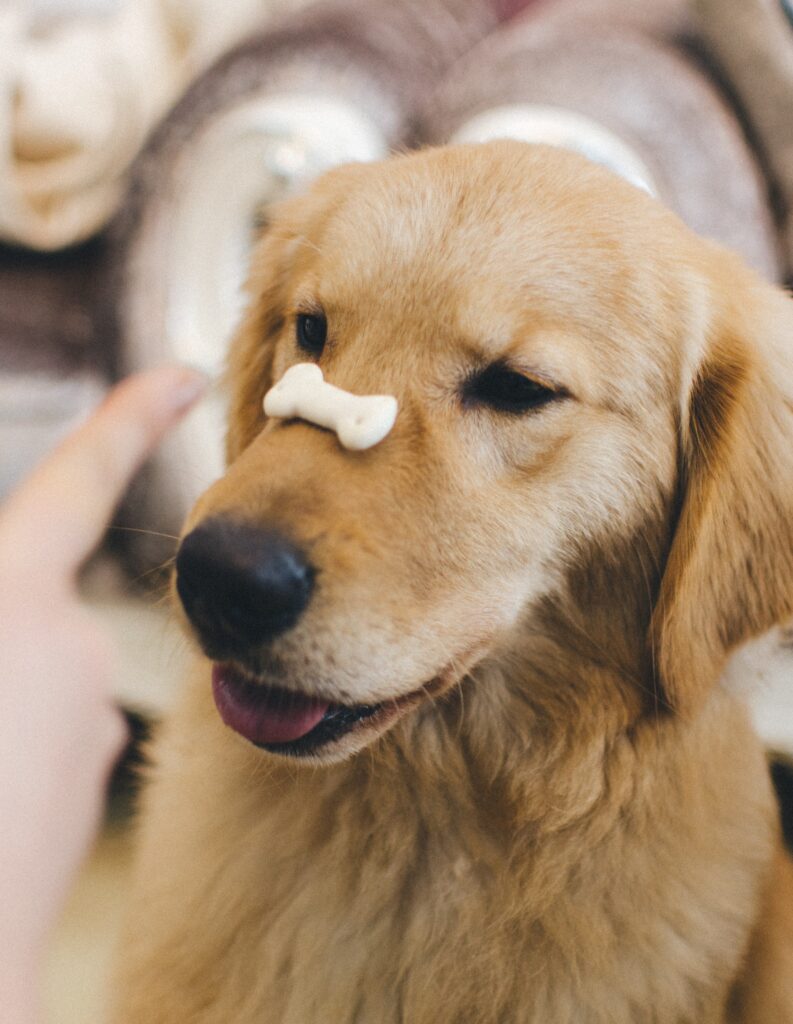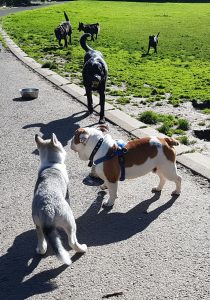Need help with Reactive Dog Behaviour? Join my FREE Facebook support group...
Setting yourself up for success in dog rehabilitation
Successful dog rehabilitation requires lots of practise. If you wait for opportunities to find you, you might not get enough repetitions to be of any value. Here’s why…
The learning Process
Every time your dog practises a behaviour they become better at it. This works for good and bad behaviours, of course!
So let’s imagine your dog is reactive to other dogs. Every time they are triggered into a big and loud response, they become better at that behaviour and it becomes even more instinctual to them. So we have to find a way to expose them to other dogs and not trigger that response. Every time we do that successfully they get better at the new, calmer response, instead.
So, if you get surprised a lot, and only manage to avoid the big and loud reaction half the time you might actually get nowhere. In fact, if you even get caught out a quarter of the time, you’ll probably still struggle. This is due to the number of times the unwanted behaviour has been practised in the past. If your dog has been reactive for a while, it might take quite a few repetitions of the new behaviour before that new behaviour becomes the default behaviour.

Managing Your Environment
So, to get the maximum benefit from your efforts, you’ll be working extra hard to manage your dogs behaviour. You’ll make sure to always be prepared with treats, long leads, clickers, or whatever it is you need to help your dog stay calm when you meet that other dog. You’ll also be very careful to choose the best places to work with your dog. So, rather than walking tight and windy paths, choose places where you can see all around and create the space you both need.
Remember that most footballers already know how to play football! But they still run training sessions to practise different skills. They don’t wait until they are in the middle of matches to rehearse corners or penalties. So it makes sense not to wait until a dog suddenly comes round the corner to practise walking past other dogs!
Get your reps up!
Like us, dogs need to experiment and make mistakes while they figure out what to do. To learn a new behaviour or trick they will need to get it wrong a few times so they can learn the right way to do it. Once they’ve figured out what you want, they’ll then need to repeat that until they get good at it. For this reason, don’t wait for opportunities to come to you. Try to set your dog up so you can practise over and over again.
Lets imagine you want your dog to sit near the front door when you invite people in. If you only attempt to train your dog on the odd occasion someone visits, he may never get the hang of it. The first time you try, he’ll get it all kinds of wrong, that’s normal. But if you try it again straight away, he’ll remember where he went wrong and try to do better. If you wait a week, he’ll have forgotten the errors and you’ll be starting from scratch again.
Waiting for opportunities to arise also leaves you vulnerable to not being prepared, and feeling under pressure. If you wait for a visitor to arrive naturally, there’s a good chance you’ll not be ready. Maybe you’ll be in the wrong place, or your dog will be! The treats won’t be where you left them, and you’ll be feeling pressured to let your guest in, so you’ll end up rushing it.
Instead, ask someone to ring your doorbell and wait patiently while you take your time answering it. Get them to help you out ten times in a row and you’ll get the maximum benefit out of each repetition and make some real progress.
Finding the balance
As I already mentioned, at the start of your training, your dog will have a history of unwanted responses. If your dog reacts badly to the doorbell ringing. Ask yourself how many times does your doorbell get rung every week. Even if, between parcel delivery, gas meter readers, take-aways, random callers, and friends, you only get 3 a week. Over the course of the last year, that’s still 150 times your dog has practised the unwanted behaviour.
If you think of that unwanted behaviour as a weight on one side of a see-saw. On the other side will be all the times you practise the new behaviour. The aim is to add enough repetitions to the good side, that the see-saw tips. When this happens the new behaviour will start to become the default behaviour. At this stage, you might start to relax a little bit. But, the see-saw is still teetering between the two behaviours (this is when you’ll have good and bad days) so you’ll need to stay prepared and keep going a little longer to ensure the new behaviour becomes a habit. Only then can you relax entirely and trust your dog to make the right decision when they get surprised.
Are you struggling with your dogs behaviour?
Private Dog Behaviour Consultations are currently available in the Dundee area and beyond, or via zoom. If you are looking for help solving your dogs behaviour and training problems, then please get in touch!


